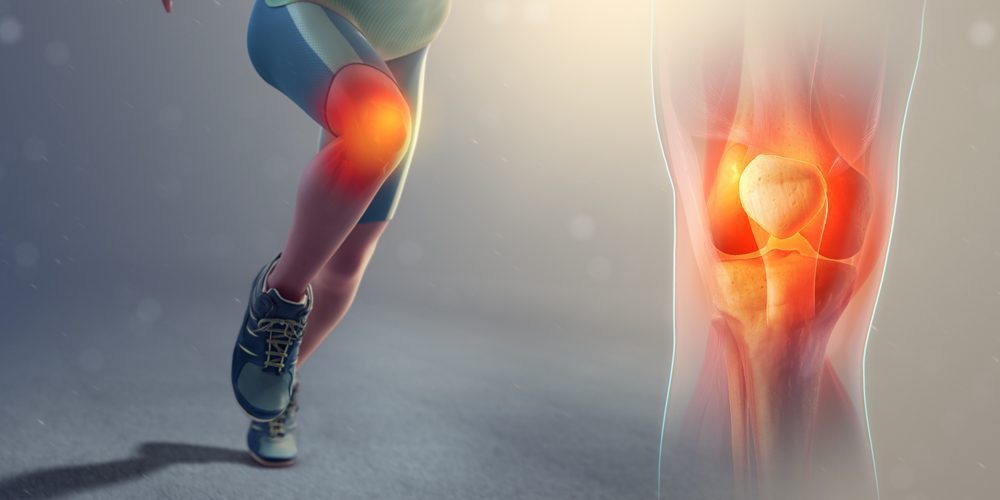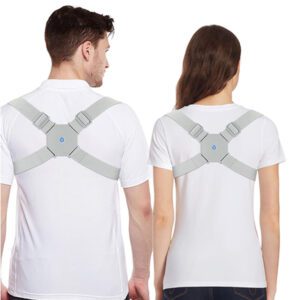Knee pain is one of the most common medical issues that people experience. While there are many different causes of knee pain, pain on the side of the knee is a particular type of pain that can be quite debilitating. In this article, we will explore the causes, treatment, and home remedies for knee pain on the side of the knee. We hope that this information will help you to better understand your condition and make informed decisions about your treatment options and whether or not it is necessary to visit a doctor.
The anatomy of the side of the knee
The knee is one of the biggest joints in the body, and it’s made up of three bones: the thighbone (femur), shinbone (tibia), and kneecap (patella). The joint is held together by ligaments, which are strong, flexible bands of tissue that connect bones to each other. The knee also has a layer of smooth tissue called cartilage, which covers the ends of the bones and helps the joint move smoothly.
The side of the knee is made up of two main structures: the lateral collateral ligament (LCL) and the biceps femoris tendon. The LCL is a strong band of tissue that runs from the outside of the femur to the outside of the shinbone. It helps to stabilize the knee joint. The biceps femoris tendon is a cord of tissue that attaches the biceps muscle to the outside of the shinbone. This muscle helps to bend the knee.
The side of the knee also contains a number of smaller structures, including the iliotibial band, peroneal muscles, and gastrocnemius muscle. These structures all work together to provide stability and movement at the knee joint.
Symptoms of knee pain on the side
Most people experience some kind of knee pain at some point in their lives. While usually not serious, knee pain can be a sign of a more serious underlying condition. It is important to be aware of the different types of knee pain and their causes in order to get the proper treatment.
One type of knee pain is lateral knee pain, which is felt on the outside of the knee. This type of pain is often caused by overuse, such as from running or playing sports. It can also be caused by an injury, such as a ligament tear or tendonitis. Sometimes, lateral knee pain can be a symptom of arthritis. If the pain is severe or persists for more than a few days, it is important to see a doctor or physiotherapist for an evaluation.
Another type of knee pain is medial knee pain, which is felt on the inside of the knee. Medial knee pain is typically caused by overuse as well, but can also be caused by an injury or arthritis. As with lateral knee pain, if the pain is severe or does not go away after a few days, it is important to seek medical attention.
Knee pain can also be indicative of other problems, such as a meniscus tear, Baker’s cyst, or patellar tendinitis. These conditions can cause pain on the side of the knee, as well as other symptoms such as swelling, stiffness, and difficulty moving the knee. If you experience any of these symptoms, it is important to see a doctor for an evaluation.
Common causes
There are a number of different conditions that can cause pain on the side of the knee. Some of the most common causes include:
Lateral collateral ligament injury: This occurs when the LCL is stretched or torn. It is often caused by a sudden twisting movement of the knee.
Biceps femoris tendonitis: This is an inflammation of the biceps femoris tendon. It is often caused by overuse or repetitive motion.
Iliotibial band syndrome: This is an inflammation of the iliotibial band, a thick band of tissue that runs from the hip to the knee. It is often caused by overuse, such as from running or biking.
Arthritis: This is a degenerative condition that can cause pain, stiffness, and swelling in the joints. It is more common in older adults but can occur at any age.
If you are experiencing pain on the side of your knee, it is important to see a doctor or physiotherapist for an evaluation. They will be able to determine the cause of your pain and recommend the best treatment options.
Diagnosis
There are a number of different conditions that can cause knee pain, so an accurate diagnosis is essential.
Your doctor will likely start by taking your medical history and doing a physical examination. They may also order X-rays or other imaging tests to get a better look at your knees.
Once the underlying cause of your knee pain has been determined, your doctor will work with you to develop a treatment plan that may include medication, physical therapy, lifestyle changes, or surgery. Taking steps to reduce the amount of stress on your knees can help to prevent further damage and relieve your pain.
Treatment options
Depending on the severity of your knee pain, your doctor may recommend one or more of the following treatment options:
Rest, ice, compression, and elevation (RICE) can help to reduce swelling and pain.
Medications, such as ibuprofen or acetaminophen, can also be helpful. If your pain is due to arthritis, your doctor may recommend injections of Steroids or hyaluronic acid.
Surgery is sometimes necessary to repair a torn meniscus or ligament.
Physical therapy can help to improve range of motion and strengthen the muscles around the knee joint. Exercises that focus on flexibility and range of motion are often recommended.
Strengthening exercises, such as squats and lunges, can also be helpful.
For more severe cases of knee pain, your doctor may recommend a combination of these treatment options. Working with your doctor, physiotherapist, and/or orthopedic surgeon will help you develop a plan that is tailored to your individual needs.
Home remedies and lifestyle changes
If you’re dealing with knee pain on the side of your knee, there are a few things you can do at home to help ease the discomfort. First, try icing the area for 15-20 minutes several times a day. You can also take over-the-counter pain relievers like ibuprofen or acetaminophen. If those don’t help, consider trying a topical cream or ointment that contains capsaicin.
In addition to self-care measures, there are a few lifestyle changes you can and in some cases must make to help reduce knee pain on the side of your knee. First, if you’re overweight, losing even a few pounds can take the stress off your knees. Also, avoid activities that put repetitive stress on your joints, such as running on hard surfaces or playing tennis. If you must participate in these activities, be sure to warm up first and wear supportive shoes. Finally, don’t forget to stretch and strengthen the muscles around your knee joint with regular exercise. Working with a physiotherapist can also be helpful in developing an appropriate exercise program.
While knee pain on the side of your knee can be frustrating, there are several things you can do to ease the pain. Be sure to see your doctor for an accurate diagnosis and treatment plan that is tailored to your needs. In addition, self-care measures and lifestyle changes can help reduce pain and prevent further damage. With the proper care, you can get back to your favorite activities pain-free.
Prevention and supports
Prevention is always the best medicine when it comes to pain, whether it be in the knees or elsewhere. Make sure to stretch and warm-up before any physical activity, even something as relatively innocuous as going for a jog. And if you feel any pain during your activities, take a break; giving your knee some rest will help immensely. If the pain persists, it may be time to see a physiotherapist or doctor.
There are also a variety of braces, supports and immobilizers available that can help prevent pain in the knee from arising or coming back. These can be worn during physical activity or even just during everyday life and can make a world of difference for those who suffer from chronic knee pain.
So if you’re looking to avoid pain on the side of your knee, make sure to stretch and warm-up before exercise, take breaks when needed and consider investing in a support or brace. following these tips will help you stay active and pain-free for years to come. And if you#re on the search for a great support that doesn’t cost an arm and your knee, take a look at our shop here.
Takeaways
Knee pain on the side can be caused by a number of different things, from torn ligaments to overuse. If you’re experiencing pain on the side of your knee, it’s important to see a doctor for an accurate diagnosis and treatment plan. In addition, there are a few self-care measures and lifestyle changes you can make to help reduce pain and prevent further damage. With the proper care, you can get back to your favorite activities pain-free.
Do you suffer from knee pain on the side? What self-care measures and lifestyle changes have you found to be helpful? Share your tips with us in the comments below.
I really hope that this article gave you a brief overview on the topic of knee pain on the side of the knee. As always, if you have any pain that is lasting more than a week, please consult your GP or a physiotherapist for an accurate diagnosis. Stay pain-free!
Do you have any questions or suggestions? Please leave them below! I would love to hear from you. Until next time!























